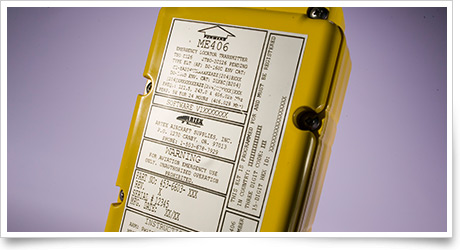Custom content for the Sept. 28, 2012, issue of 'AOPA ePilot' newsletter
| The following stories from the Sept. 28, 2012, edition of AOPA ePilot were provided to AOPA members who expressed an interest in the particular subject areas. Any AOPA member can receive information tailored to their areas of interest by updating their preferences online |
training tipsKeeping up on ELTs
When must the battery in an emergency locator transmitter (ELT) be replaced (or recharged if the battery is rechargeable)?
A) After one-half the battery’s useful life.
B) During each annual and 100-hour inspection.
C) Every 24 calendar months.
From recency of experience or medical certification to aircraft maintenance, pilots have many expiration dates to keep track of to remain in compliance with regulations. That list includes the frequently out-of-sight, out-of-mind ELT—a device that could provide rescuers with vital position information on an aircraft forced down off the airport.
Battery replacement is only one of numerous subjects a student pilot should be able to discuss about the ELT. For example, where is the ELT installed in your trainer? (The tailcone is a common site.)
On what frequency does your ELT transmit upon activation? There was a time when the simple answer to that question was the distress frequency 121.5 megahertz (MHz). Newer units transmit on 406 MHz. Those units are capable of narrowing the search area for a rescue.
There is no requirement to replace an older ELT. “In 2010, the Federal Communications Commission (FCC) proposed banning ELTs transmitting on 121.5 MHz. The proposal encountered strong opposition from AOPA, the aviation industry, and the FAA, which later that year formally requested that the FCC drop the mandate,” says this AOPA article.
Pilots should know, however, that there also no longer is satellite monitoring of ELTs transmitting on 121.5 MHz, leaving overflying aircraft and nearby air traffic facilities as the only receivers of an activated unit’s signal, and possibly making them less effective in a remote area.
On occasion, an ELT can be activated inadvertently by turbulence or a hard landing. Review the discussion in Chapter 6 of the Aeronautical Information Manual for how to check for false alarms.
As for that knowledge test question: This ELT discussion page from AOPA’s Pilot Information Canter explains that batteries “must be replaced or recharged when the transmitter has been in use for more than 1 cumulative hour; or when 50 percent of their useful life (or for rechargeable batteries, 50 percent of their useful life or charge) has expired, as established by the transmitter manufacturer under its approval.” training productsRedbird Cygnus from King SchoolsConnect your flight simulator to your favorite aviation apps running on your smartphone or tablet via the Redbird Cygnus Home Direct or Cygnus Pro Wireless devices. The location of your simulated aircraft is sent to your device, fooling it into believing it is where your simulated airplane is—which in turn allows you to use any app just as you would on an actual flight. The Cygnus Pro Wireless, priced at $599, lets you wirelessly connect five mobile devices to a sim. The Cygnus Home Direct, priced at $199 and available soon, lets you directly connect one device to a sim. For more information, see the website or contact King Schools at 800/854-1001.
Note: Products listed have not been evaluated by ePilot editors unless otherwise noted. AOPA assumes no responsibility for products or services listed or for claims or actions by manufacturers or vendors. final examQuestion: What does the term “landing rights airport” mean?
Answer: This term is used in the context of international flights. A landing rights airport is an airport at which permission to land may be granted by the appropriate customs officer with acknowledgment of the appropriate agencies and services. In addition to providing advance notice of arrival, permission is required before an aircraft may land at an airport that has not been designated for customs purposes as an international airport of entry. For more information on customs and international flying, see AOPA’s International Flying subject report.
Got a question for our technical services staff? Email [email protected] or call the Pilot Information Center, 800/872-2672. Don’t forget the online archive of “Final Exam” questions and answers, searchable by keyword or topic. |
 A sample question from the FAA
A sample question from the FAA 

